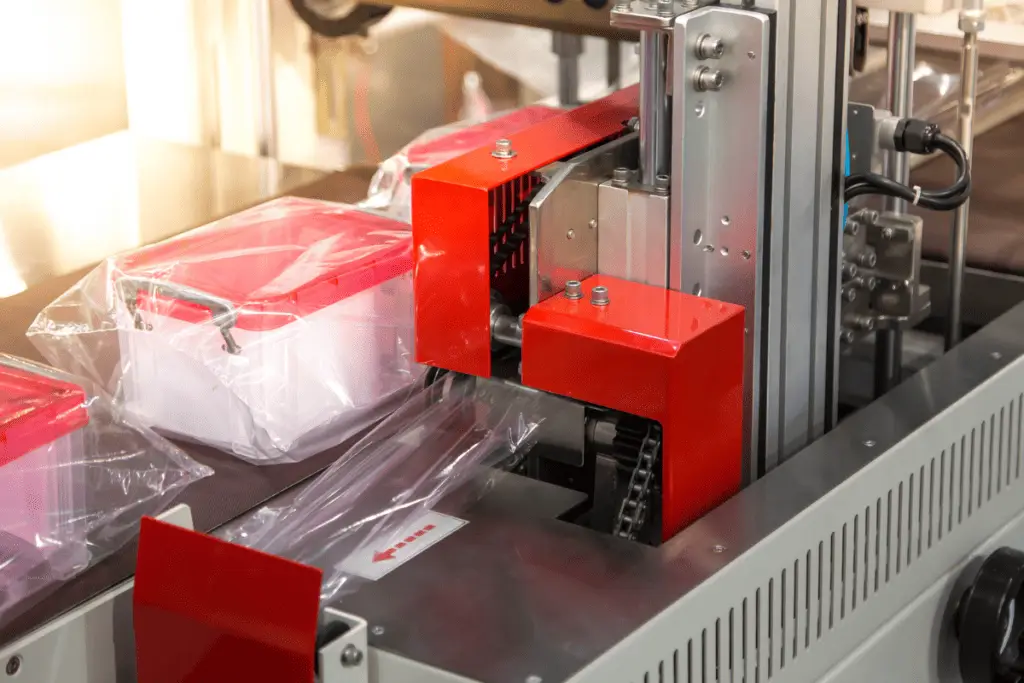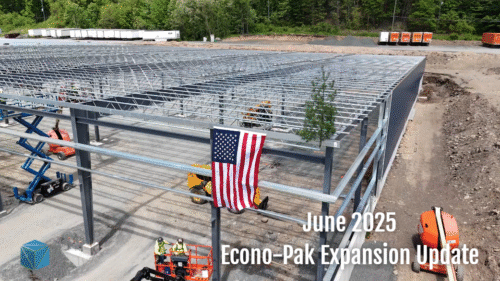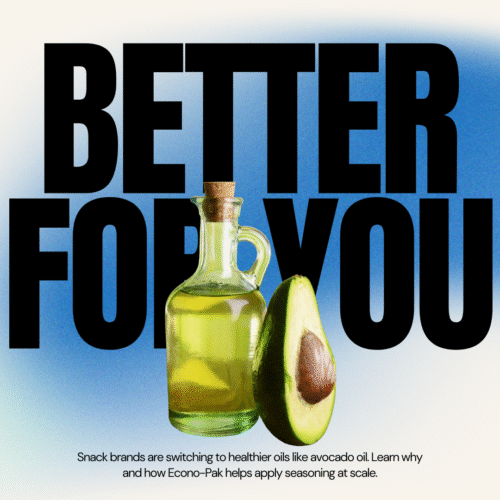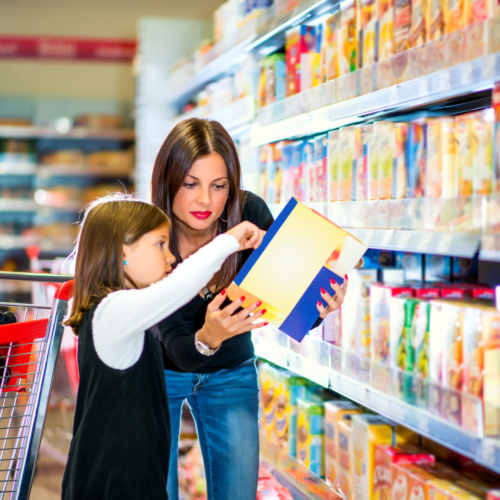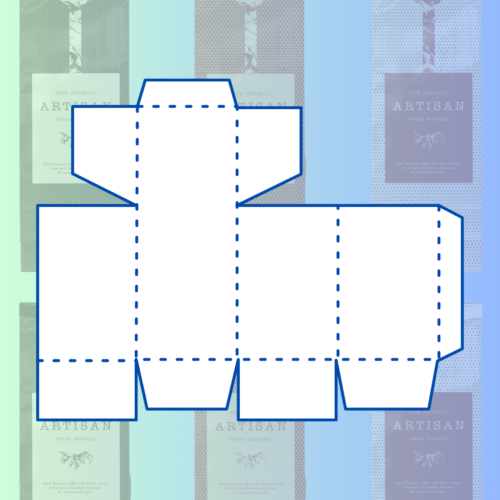What Materials Are Used in Flow Wrapping?
During the flow wrapping process, a conveyor belt moves the product horizontally to the forming area. The product is then wrapped in film and sealed at both ends by applying pressure, heat, or a combination of both.
Similar to vertical form fill seal (VFFS) methods, the finished result is a flexible pouch secured by airtight crimp-sealed ends.
What Materials are Used with Flow Wrapping? 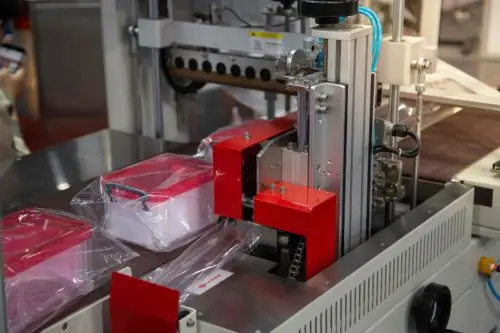
The flow wrapping process is compatible with the same types of materials used in VFFS methods. When choosing a material for a packaging application, it is important to prioritize product safety and quality while considering the type of packaging aesthetic that will best promote the brand and engage the target consumer. Common flow wrap packaging materials include:
- Polyethylene terephthalate (PET): A member of the polyester family, PET is a durable and transparent thermoplastic polymer resin. This lightweight yet strong packaging material is ideal for protecting items from their surroundings while allowing the consumer to view the enclosed product.
- Polyethylene (PE): PE, a type of polyolefin resin, is the most widely used consumer plastic today. This transparent, glossy material makes an attractive and protective package that maintains the integrity and freshness of the product during transportation and on the store shelf.
- Metalized film: Metalized films are metal-coated polymer films with a shiny metallic appearance. In food packaging applications, these films offer reliable protection against water and oxygen permeation while conveying a high-end aesthetic.
- Poly film: Poly film is a thin, transparent polymeric packaging material that prevents contamination and extends the product’s shelf life.
- Polypropylene: Polypropylene is a thermoplastic polymer in the polyolefin family. This clear, glossy material is suitable for packaging everything from sensitive pharmaceutical and medicinal products to perishable food items.
How Does Flow Wrapping Work?
While the flow wrapping process can be customized for various applications and materials, all flow wrapping machines generally consist of the same elements:
- Film rolls
- Infeed conveyor system
- Film feed assembly
- Forming area
- Delivery area
These elements work together to continuously transport, wrap, seal, and discharge the packaged products. Individual steps of the flow wrapping process include:
- Process initiation: The unwrapped products are placed on the infeed conveyor belt, where they are transported to the forming area.
- Wrapping: The flow wrapping machine wraps the product in the sealing material and mates the two outer edges of the material.
- Sealing: Two rotating fin seal wheels form a longitudinal seal along the mated edges using heat, pressure, or a combination of both.
- Cutting: Using rotating cutting heads or end seal crimpers, both ends of the adjoined packages are simultaneously sealed and cut to produce several individual packages.
- Delivery: The packaged products are transported to the discharged area.
What Types of Products Are Ideal for Flow Wrap Packaging?
Compatible with a wide range of product shapes and sizes, flow wrap packaging can be used for essentially any solid item that can be transported along a horizontal conveyor belt. Small granular items or liquid products are generally better suited for vertical packaging techniques that allow the product to be dropped into the package.
Examples of commonly flow-wrapped items include:
- Candy and confectionery products
- Snack foods
- Dry products such as pasta, rice, and seeds
- Produce
- Meat, poultry, and seafood
- Pharmaceutical and medicinal items
- Industrial products such as tools and hardware
- Personal care items and cosmetics
Custom Flow Wrapping Services at Econo-Pak
Flow wrapping is a versatile and efficient packaging process suitable for a wide range of product types and sizes. At Econo-Pack, our flow wrapping capabilities and other packaging services allow us to create functional and visually engaging packaging solutions that maintain product quality and freshness while enhancing brand visibility. As demonstrated by our long-term partnerships with several industry-leading companies, clients trust us to consistently deliver the highest-quality products with unbeatable turnaround times and competitive pricing.
To learn more about our flow wrapping services and other packaging capabilities, please request a quote to get pricing details on your project.
Let's start scaling.
Is your demand outpacing your ability to package your own product? Then consider outsourcing with Econo-Pak.
With over 40 years of experience working with both small brands and Fortune 500 companies, we are capable of handling your specific dry food product.
Get in touch with our team for a fixed-price quote for your project.

